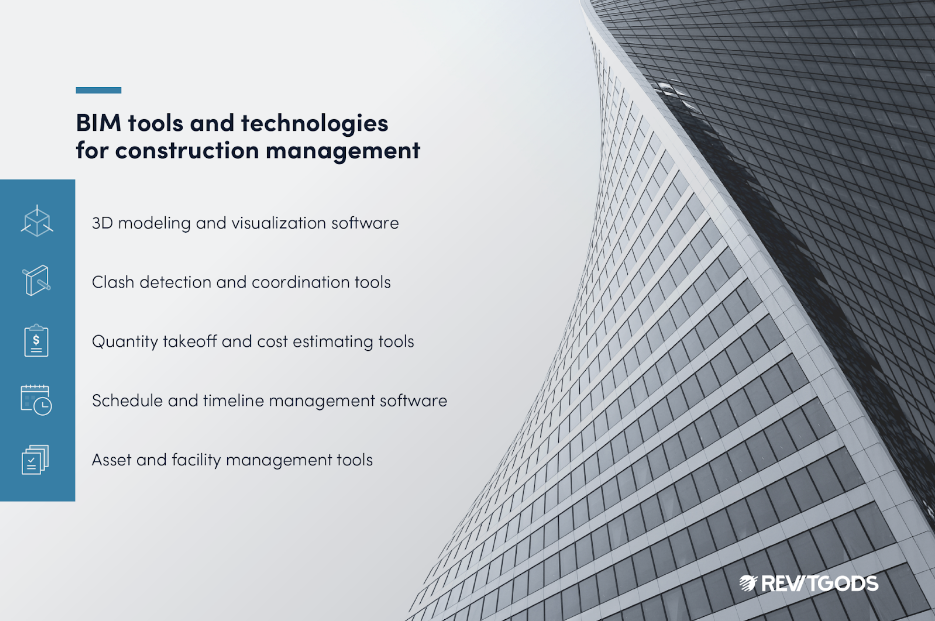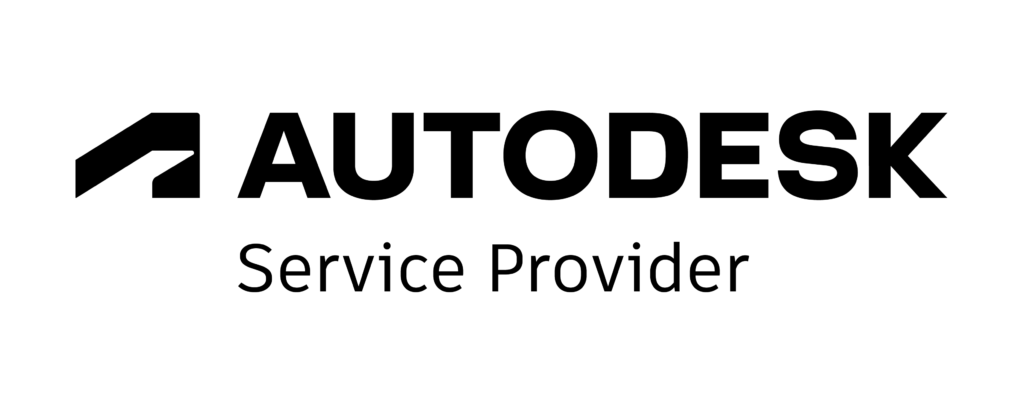Building information modeling (BIM) involves creating and managing information within a virtual 3D building model. BIM allows various stakeholders to see a digital representation of a building before construction begins.
These highly accurate and detailed building models allow architects, engineers, and construction managers (AEC) to build high-quality structures while saving time and money by spotting potential flaws and optimizing construction processes.
BIM is an emerging industry and will likely grow exponentially in the coming years. However, many AEC professionals are still unaware of BIM’s benefits. In this article, you’ll learn about integrating BIM into your current practices and the value you may experience as you integrate BIM technology into your work.
Why integrate BIM into the construction management process?
Before fully understanding BIM and what it can do, you must know about virtual design and construction (VDC). VDC uses the BIM model to organize and plan the entire construction process. Executing and implementing VDC requires different abilities and its own software.
BIM models are created in Revit and imported into a different platform called Naviswork. Naviswork is the platform where BIM coordination (another term for using VDC to plan a construction project) happens.
Once you import all your building information into Naviswork, you can ensure everything in the building fits together without potential clashes. If there are any conflicts, you can make changes in the virtual model so you don’t run into issues once physical construction begins.
The above example illustrates one of the greatest benefits BIM offers for the construction process. Many construction teams waste significant time and financial resources on mistakes and rework. They often miss deadlines because they must work backward to solve problems they could have avoided by running virtual simulations ahead of time.
Through BIM and VDC, project teams can virtually coordinate construction projects and eliminate mistakes and errors before they begin the physical building. Rather than ripping out a piece that doesn’t fit and starting over, they can resolve issues virtually so they don’t occur during physical construction.
Here are a few other examples of how BIM can enhance the construction process:
- Efficient project management. BIM streamlines stakeholder communication by making relevant information and data accessible to every team member. This results in improved planning and fewer errors.
- Enhanced visualization and simulation. Through BIM, each party can see how the finished building will look. This allows them to improve the building design before construction starts.
- Improved communication and collaboration. Each person can access the BIM model through a shared cloud platform, making it easy to review potential clashes and verify elements on site.
- Reduced costs and time. BIM models enhance productivity and help workers complete building projects more efficiently. They also make estimating the life cycle of various building components and fixtures easier, saving companies money.
Challenges of integrating BIM into construction management
Although the potential benefits of BIM are numerous, the use of BIM doesn’t come without challenges. Potential obstacles may include:
- Data management issues. BIM systems hold a large amount of data, especially for larger projects. Managers may have to educate various stakeholders on how to access cloud-based data.
- High initial costs and investment. BIM software is expensive to purchase and maintain. It also requires an initial investment of time for whoever spearheads BIM operations.
- Limited operability. Some BIM software may not work with tools you’re already using, making integrating BIM into projects already in progress a challenge. For example, 3D objects modeled in AutoCAD can’t be edited in Revit, even though both platforms are owned by the same company.
- Resistance to change and adoption. Adopting BIM technologies requires construction teams to make significant changes to existing processes. Some workers may prefer the old way of doing things.
- Training and skill requirements. Specialized BIM skills take significant time, money, and energy to develop. Many AEC project teams need outside help to implement BIM technology.
Perhaps the greatest challenge of BIM management is working with architects who are unfamiliar with the field of BIM. Only one-third of architects currently use BIM, and many construction firms are hesitant to completely change their processes due to the lack of available BIM models and insufficient data to justify their effectiveness.
The other major challenge is that many teams produce inaccurate BIM models due to a lack of awareness of using BIM software like Revit. Many building owners aren’t familiar with how to use BIM and place unclear expectations on their contractors that they aren’t sure how to meet. The result is a poor model that isn’t helpful for the construction process.
BIM tools and technologies for construction management
BIM offers several technologies that construction companies can use when managing projects. In addition, new technologies continue to emerge as the industry expands.
You should understand the difference between BIM and VDC software. BIM platforms like Revit, Tekla, and Vectorworks allow all stakeholders to author BIM models within a common environment. The goal is to create a 3D BIM model that can be used for construction planning and building management.
VDC refers to using BIM models to improve scheduling, cost estimation, and risk management. VDC software includes platforms like Navisworks, Assemble, and Revizto, and is used by construction managers, cost estimators, and BIM coordinators. It engages the entire construction team before and during the construction process.

3D modeling and visualization software
During the construction phase, project teams use BIM tools like Revit, Tekla, Infraworks, and Civil 3D for precise coordination and documenting on-site changes. After a design team hands off their models, construction teams collaborate with fabricators, exchanging generic elements for specific ones to ensure accurate system coordination within their building models.
BIM software lets these teams engage in real-time model edits, responding agilely to change orders and revisions while crafting shop drawings for manufacturing. This dynamic workflow optimizes decision-making and quality control, minimizing rework and construction costs.
Clash detection and coordination tools
These advanced tools, including Navisworks (an Autodesk product), Solibri, and Revizto significantly improve project workflows by helping users identify conflicts within building designs and allocate responsibility for swift resolution.
During the construction phase, project teams can use these tools to pinpoint intersecting elements within the building’s 3D model, streamlining clash identification and letting them assign any issues to the appropriate users or stakeholders. This reduces the need for revisions, expedites decision-making, and helps ensure sustainability throughout the project’s lifecycle.
Quantity takeoff and cost estimating tools
Construction managers can use Revit, Tekla, Civil 3D, Infraworks, Navisworks, and other BIM platforms to perform quantity takeoffs and cost estimation. These tools integrate with other BIM software, allowing all stakeholders to work with the same data.
Quantity takeoff and cost estimating tools improve decision-making when planning future projects, as teams can more accurately estimate what materials and labor they need to move forward. Teams can also use this data to refine budgets, optimize resources, and efficiently plan schedules.
Schedule and timeline management software
Tools like Navisworks, Twinmotion, and Synchro help with schedule simulation. Navisworks enables comprehensive 4D scheduling by integrating project models with timelines, Twinmotion offers real-time visualization of construction progress, and Synchro provides advanced scheduling and simulation capabilities for seamless project coordination.
Construction companies predominantly use these tools during the bidding phase of a project to sell clients on their strategy and proposed construction process. These simulations help communicate intent and value to key stakeholders.
Construction managers also use these tools to plan jobsite logistics to map out things like where materials should be delivered on a crowded site. They also use it to simulate weather conditions during key seasons that can have an impact on the construction process. For example, certain months may not be the best to pour foundations when cold weather can freeze the soil.
Asset and facility management tools
Willow, a Microsoft partner, is one of the premier asset and facility management tools. Functions like asset tracking, maintenance scheduling, performance analysis, and resource optimization make it useful before and after completing a project. It helps teams track equipment and systems during construction for better building layout and structure decisions, and also improves energy efficiency in finished buildings.
Asset and facility management tools can also add value to finished projects by helping building managers forecast maintenance and repair needs based on the expected life cycle of key building fixtures. They can also monitor energy usage throughout the building and use that information to make cost-saving decisions.
Best practices for successful BIM integration in construction management
Businesses looking to incorporate BIM into their existing workflows and processes should keep the following best practices in mind:
- Establish clear internal BIM standards. Come to a mutual understanding with all stakeholders about how BIM will play a role in the construction process. Outline your project efficiency goals and decide which software platforms and standards can help you achieve them.
- Develop a strong BIM execution plan template. BIM execution plans help align your team of subcontractors to a single execution strategy for using BIM on a project. Having a template for each project can help standardize your process.
- Create a content development strategy. Not all project subconsultants have BIM capabilities. Plan to have your internal team or a third-party consultant develop BIM models and shop drawings on their behalf. Doing this can help you control the quality of each project.
- Develop an internal BIM QA/QC process. You never want to wait until you start construction to discover modeling errors. If you’re using the BIM model to coordinate your project virtually before starting construction, you’ll need a process to confirm that all elements are the right size, shape, location, and orientation. This is especially important if the building owner requests the model to be turned over at the end of a project.
- Invest in training and continuing education. It typically takes 12 to 18 months to fully integrate BIM into your construction management process. You’ll need to constantly train your team to ensure you hit your desired project efficiency goals.
- Constantly evaluate new technology. As the field of BIM grows, new advancements will emerge that can streamline project coordination, project estimation, and on-site construction. Stay ahead of the competition by staying updated on new advancements.
Case studies of successful BIM integration in construction management by RevitGods
RevitGods is an industry leader in BIM management and coordination. We help architects, engineers, and others in the construction industry integrate BIM tools into their projects for better project planning and improved quality control.
RevitGods has a wide range of experience integrating BIM into various sizes and types of construction projects. We take no shortcuts when providing clients with the highest service and value.
RevitGods has played a key role in the following notable projects.
Philadelphia Public Services Building: BIM modeling + coordination
In 2021, the city of Philadelphia completed a new public service building. They worked with RevitGods through renovating, converting, and reconstructing this historic 520,000-square-foot structure.
As RevitGods started working on VDC for the public services building, we recognized an error in the original plans. The architects had documented the building as orthogonal, even though that wasn’t the case. This design flaw led to major issues, and the virtual model revealed that no two columns were the same. This insight explained why the building was initially crooked.

RevitGods developed a base structure model along with LOD-400 mechanical and plumbing models. Although issues arose during construction due to its size and age, RevitGods developed a structural model that improved accuracy and spearheaded the development of the building to completion.
New Jersey Executive State House: BIM coordination
When the state of New Jersey decided to renovate the historic Capital Executive State House, RevitGods was ready to help. The renovation took several years to complete, and like many renovations, things were difficult because of the need to work with existing architecture and details.

RevitGods helped bring all teams together to align modeling information and run BIM coordination and clash detection. We made a few small changes to the architectural model when we realized a few components needed to shift.
Another major aspect of this project was planning for future facility management. The state of New Jersey wants to use a 3D file in the future to help its facility managers keep up with various building components.
Camden High School: BIM modeling
RevitGods also helped integrate the use of BIM technology to construct New Jersey’s Camden High School. They took the lead in developing base models for the impressive two-story education complex, which included four small learning communities, a gymnasium, an auxiliary gymnasium, and an auditorium.
Our expertise filled in all the necessary details, delivering the best modeling option to the team. The Camden High School project was no small feat, with a building size of 270,000 sq. ft. and an estimated cost of $133,000,000. The New Jersey Schools Development Authority owned the project, while DIGroup Architecture, LLC served as the architect, and Ernest Bock & Sons acted as the prime contractor.
The future of BIM in construction management
BIM’s role in construction management is vital for improving projects’ financial performance thanks to its improvements to risk mitigation, decision-making, and site safety. In 2021, the total cost of work-related injuries was $167 billion, with construction ranked as the most dangerous industry for workers.
The high rate of construction injuries and the high costs it incurs can be due to a number of factors, such as inaccurate estimates, poor planning, and lack of communication. But BIM’s automation features and precise modeling prevents estimation errors and minimizes oversights, and its collaborative platform bridges communication divides among stakeholders for smoother project execution.
But fostering safer construction sites is just one way BIM implementation is shaping a better future for construction management. Its precision minimizes errors overall and curbs rework, mitigating financial setbacks while also optimizing project coordination and risk management. This is demonstrated in the preconstruction 1D design phase, where BIM sets the trajectory for a seamless project lifecycle.
Leveraging BIM for better construction management also empowers teams to create comprehensive digital records of buildings, reducing the need for repeated site visits. You can even simulate weather impacts on a project or building to optimize logistics and further reduce on-site risks.
Using augmented reality (AR) and virtual reality (VR) tools in conjunction with BIM offers another way to increase worker safety as well as productivity. These technologies can simulate real-world scenarios for comprehensive training, enabling workers to learn essential skills and safety measures in a controlled environment.
Let RevitGods handle your entire VDC process
RevitGods can help with your VDC process from start to finish. Although the change management process can be full of challenges and obstacles, we can help you fully integrate VDC with your current workflows to allow your team to reap all the benefits of BIM coordination. We’ll do the work for you, so you don’t have to worry about keeping the technology burden on your plate.
RevitGods is an industry leader in BIM construction management and will tailor our expert BIM solutions to meet your company’s needs. Learn more about how we can guide the development of your BIM projects, and feel free to reach out if you have specific questions about Revit standards or BIM management.




